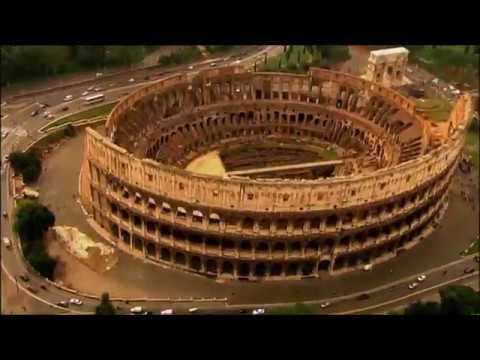The Flavian Amphitheater, commonly known as the Colosseum, is one of the greatest architectural masterpieces of the ancient world. Located in the center of Rome, Italy, the Colosseum was built between 70 and 80 AD by Emperor Vespasian, of the Flavian Dynasty, as a gift to the Roman people. It was used for gladiatorial contests, public spectacles, and other forms of entertainment, such as mock sea battles, animal hunts, and executions.
History of the Flavian Amphitheater
The Colosseum was the largest amphitheater ever built in the Roman Empire. It was originally known as the Flavian Amphitheater, named after the Flavian Dynasty, and was built to replace the wooden amphitheater that had been destroyed in a fire. Construction of the Colosseum began in 70 AD and was completed in 80 AD. It was designed to seat 50,000 spectators, and the outer walls were decorated with statues and reliefs.
The Colosseum was the site of many gladiatorial contests, public spectacles, and other forms of entertainment. These included mock sea battles, animal hunts, and executions. Gladiators would fight each other, as well as wild animals, in the arena. The Colosseum was also used for religious ceremonies and festivals.
Architecture of the Flavian Amphitheater
The Colosseum was built in a distinctive elliptical shape, measuring 188 meters long, 156 meters wide, and 48 meters high. It was made of concrete and stone, and was covered with a large canvas awning to protect spectators from the sun. The exterior was decorated with statues and reliefs of Roman gods and emperors. The Colosseum had 80 entrances, which were numbered and color-coded to indicate the type of spectator who could use each entrance.
Interior of the Flavian Amphitheater
The interior of the Colosseum was divided into three levels, each with its own seating area. The lowest level was reserved for the Roman nobility and the upper levels were for the general public. The Colosseum was also equipped with a retractable roof to protect spectators from the sun and rain. The arena was made of wood and sand, and was surrounded by a wooden fence to protect spectators from wild animals.
Legacy of the Flavian Amphitheater
The Colosseum has become a symbol of the grandeur and power of the Roman Empire. It is one of the most recognizable monuments in the world and is a popular tourist destination. The Colosseum has also become a symbol of the violence and brutality of the Roman games. Despite its dark history, the Colosseum remains an impressive and awe-inspiring structure, and a reminder of the grandeur of the ancient Roman Empire.
Interesting Facts About the Flavian Amphitheater
- The Colosseum was built in just 8 years, from 70 to 80 AD.
- The Colosseum was used for gladiatorial contests, public spectacles, and other forms of entertainment.
- The Colosseum was made of concrete and stone, and was covered with a large canvas awning to protect spectators from the sun.
- The Colosseum had 80 entrances, which were numbered and color-coded to indicate the type of spectator who could use each entrance.
- The Colosseum has become a symbol of the grandeur and power of the Roman Empire.
